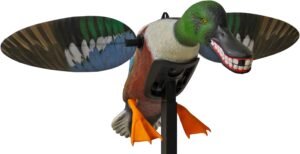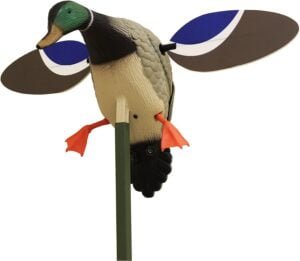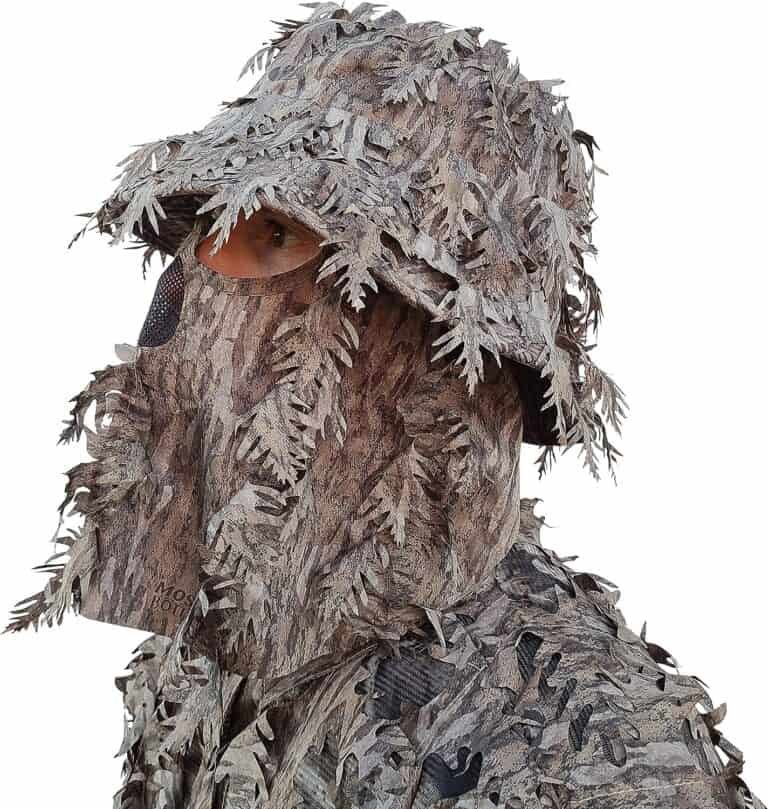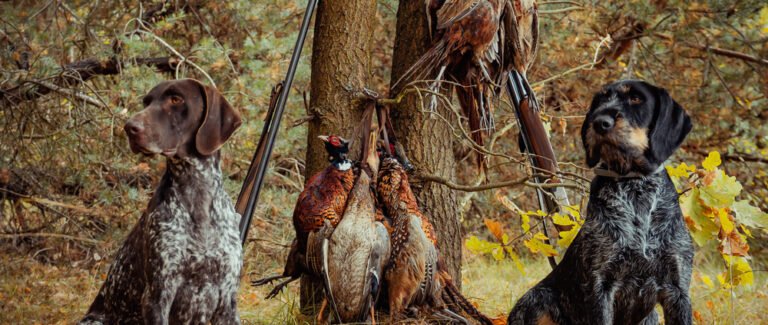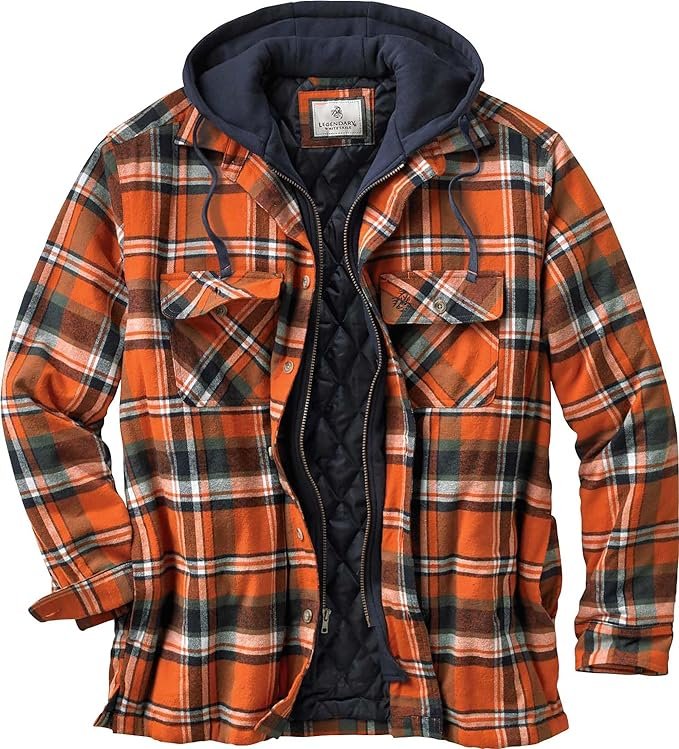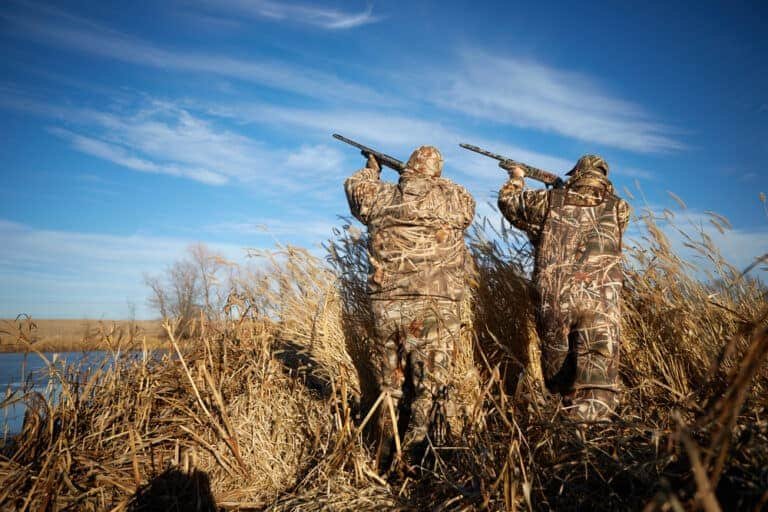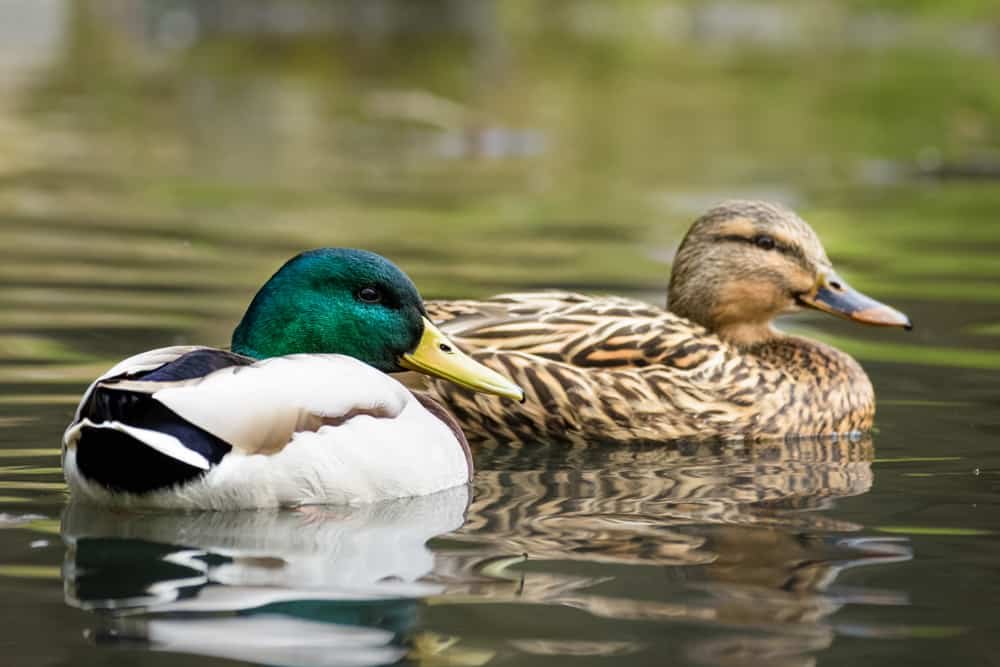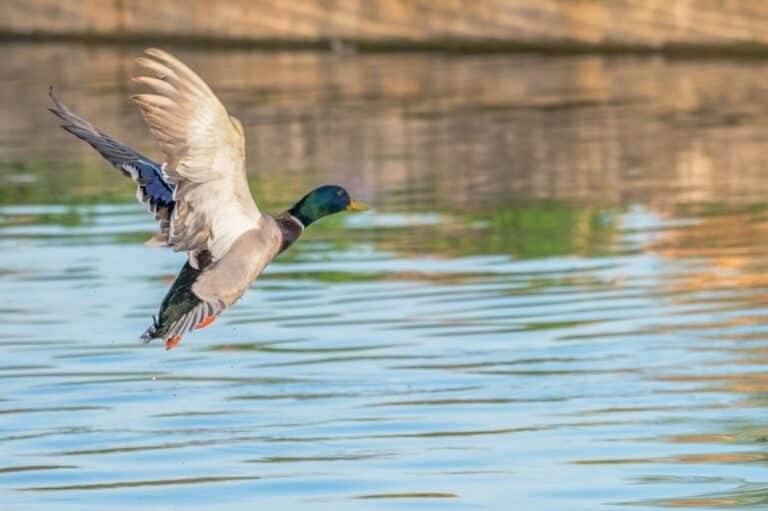Decoy Selection and Setup – What You Need to Know
In hunting and wildlife photography, decoy selection and setup plays an indispensable role, crucial to attracting target species. These lifelike replicas are meticulously designed to replicate the appearance and behavior of real animals, fooling their intended audience into believing they are interacting with a genuine member of their species.
The primary purpose of decoys is to lure in the desired animals within close range for a better or perfect shot. For hunters, decoys imitate the presence of potential mates or competitors, eliciting territorial responses from their prey.
This strategic approach helps hunters get closer without disturbing the natural behavior of their targets. Moreover, hunting with decoys provides an exciting challenge by enticing animals into the range for a more immersive experience.
Similarly, in wildlife photography, decoys capture unique shots without causing unnecessary animal stress or disturbance. By creating a familiar and safe environment through these imitations, photographers can witness natural behaviors up close while maintaining a respectful distance.
Purpose of Decoys
Decoys excel at mimicking natural behavior that draws the attention and curiosity of target species. Understanding how these imitations replicate real-life actions is key. Especially when selecting and setting up your decoy spread.
One common technique involves simulating feeding activity. Use selected bird or animal replicas engaged in feeding postures. Or choose birds mimicking particular feeding patterns such as pecking at the ground or water’s surface. This signals safety and abundance to nearby birds or animals who may be seeking food sources.
Another effective strategy is incorporating motion into your decoy setup. Many deceivingly clever modern-day decoys come equipped with motorized spinning-wing attachments. Some even replicate the movement of bird wings.
This motion attracts target species, as it simulates the presence of a relaxed or feeding bird nearby. The gentle whirring sound these spinning-wing decoys produce further adds to the illusion of authenticity.
By imitating natural behavior, decoys effectively communicate messages that resonate with target species, creating an environment that induces their curiosity and encourages them to approach for a closer look. The success of decoy selection and setup lies in understanding the habits and behaviors of your intended subjects, enabling you to choose the most suitable decoys for your specific hunting or photography goals.
Types of Decoys
Full-body decoys: Lifelike Replicas
When fooling those sharp-eyed waterfowl or elusive game birds, full-body decoys are our choice. These decoys are designed to mimic their real counterparts’ exact appearance and posture. Crafted with an eye for detail, they boast lifelike features such as intricate feather patterns, authentic coloration, and even lifelike eyes that can make any seasoned hunter or wildlife photographer double-take.
What sets full-body decoys apart is their ability to create a realistic visual presence in the field. Their three-dimensional design provides depth and dimension that catch the attention of target species from afar.
They offer a level of realism unmatched by other types of decoys. Having a set of full-body decoys in your arsenal will up your hunting game.
Shell Decoys: Lightweight and Portable
When mobility is your top priority, shell decoys come to the rescue. Lightweight and easily transportable, these versatile tools are designed with practicality. Shell decoys consist of hollow shells made from durable materials such as plastic or foam.
They often come with removable heads and adjustable stakes to allow customization. Depending on weather conditions or species-specific requirements settings may change. Shell decoys excel in terms of portability due to their compact design.
You can effortlessly carry multiple shell decoys in your hunting backpack without breaking a sweat. Their shape allows easy set-up and quick dismantling when you relocate swiftly between hunting spots.
Additionally, shell decoys are ideal for shallow water setups where stakes can be inserted into the ground. This provides stability even when faced with slight wind gusts. Shell decoys should undoubtedly be on your equipment list.
Silhouette Decoys: Flat, 2D Cutouts
Silhouette decoys offer a practical solution for hunters and photographers alike. These flat, 2D cutouts can replicate the shape and profile of various bird species. And they take up minimal space in your hunting gear or backpack. Made from lightweight materials like corrugated plastic or thin metal sheets, silhouette decoys are incredibly portable and hassle-free.
Silhouette decoys shine particularly in open fields or situations with expansive visual range. Their flat design allows them to stand out against the sky or blend seamlessly into tall grasses without obstructing visibility.
Due to their simplicity and lightweight nature, setting up large spreads of silhouette decoys becomes a breeze. This enables you to create an impressive visual impact that captures passing birds’ attention. Whether targeting geese during migration season or setting up turkey hunting in vast woodlands, silhouette decoys give you flexibility while effectively attracting your desired species.
Species-specific Decoys
Waterfowl Decoys: Mallards, Geese, Pintails, etc.
When it comes to waterfowl hunting or wildlife photography, using species-specific decoys is crucial for success. Different waterfowl species have distinct visual characteristics that help them identify potential mates or assess the safety of their surroundings. Mallards, geese, pintails, and other waterfowl have unique body shapes, colors, and postures that must be accurately replicated in decoys for maximum effectiveness.
For example, if you’re targeting mallards, look for decoys with vibrant green heads and brown bodies. Mallard Drake decoys commonly have a tilted head position to imitate their curious nature and attract other ducks.
On the other hand, goose decoys should be larger with upright neck positions to mimic the dominance displayed by these majestic birds. It’s important to research each species you intend to target so you can match their specific characteristics when selecting your decoy spread.
Understanding Species-specific Characteristics for Accuracy
Understanding the nuances of each target species is paramount to creating a convincing setup with your waterfowl decoys. Study the behavior and habitat preferences of the ducks or geese in your area thoroughly.
Pay attention to details such as body positioning while feeding or resting on water surfaces. For instance, pintails tip their heads down when they feed in shallow waters.
By incorporating this behavior into your pintail decoy selection and placement strategy—positioning some with lowered heads—, you increase the realism of your spread significantly. Similarly, observe how different species interact with each other during different seasons; this will help you determine whether mixing various types of duck or goose decoys would enhance realism.
Importance of Mixing Species
Mimicking nature’s diversity in your decoy spread can greatly enhance its effectiveness. Ducks and geese often congregate in mixed flocks. By incorporating a variety of species-specific decoys, you create a visual scene that is more enticing and believable to passing waterfowl.
For example, if you’re targeting mallards primarily but notice that there are also some pintails or geese frequenting the area, adding a few pintail or goose decoys to your spread can make it more attractive to passing ducks.
Seeing different species mingling together signals security and makes the area appear more natural. This increases your chances of attracting the intended targets. Remember, mixing different species in moderation is key.
You want to maintain a realistic balance without overcrowding the scene. By understanding the characteristics of each species and incorporating them intelligently into your setup, you’ll significantly improve your chances of luring in waterfowl successfully.
Decoy Placement Strategies
Spacing Between Decoys: Creating a Natural-looking Spread
When it comes to decoy placement, spacing is key. The goal is to create a spread that closely resembles the natural behavior of the target species. The spacing between decoys should mimic the distance between birds in their social groups to achieve this.
For waterfowl hunting, leaving at least 5 to 7 feet between each full-body or shell decoy is generally recommended. This spacing allows for comfortable movement and prevents overcrowding, giving incoming ducks or geese enough room to land without feeling suspicious.
However, it’s important to adapt your spacing based on your target species. Some birds prefer tighter formations, while others like more scattered groups.
For example, mallards typically stay closer together than geese. By observing and understanding the behavior of your target species, you can adjust your spread accordingly for better results.
Factors Influencing Spacing (wind direction, terrain, water depth)
While maintaining appropriate spacing between decoys is crucial, several factors influence how you should arrange them about wind direction and other environmental conditions. Wind plays a significant role in waterfowl hunting, affecting how birds approach and land within your spread.
Position your decoys to face the wind to take advantage of wind patterns and create a more realistic setup. This gives incoming birds a sense of security and mimics what they see when approaching real birds on the water.
Another factor that affects decoy placement is the terrain. Adjust your setup if you’re hunting near shorelines or marshes with varying water depths.
Place shallow-water species like teal or wading ducks near the edge where they naturally feed while positioning diving ducks such as canvasbacks or scaup further out where deeper waters exist. Water depth also influences how you arrange your decoys.
In shallower areas, place floating decoys with their keels touching the bottom to mimic feeding behavior. Use longer lines or anchors in deeper water to ensure they stay in position.
The “U” or “V” Formation Technique for Waterfowl Hunting
The “U” or “V” formation technique is a classic and effective way to arrange your waterfowl decoy spread. It mimics the flight patterns of ducks and geese, creating a visually appealing setup that can attract more birds.
To create a “U” formation, position your decoys in a gentle curve with the open end facing downwind. This setup allows incoming birds to approach from the wider side of the spread, encouraging them to land within shooting range.
Alternatively, you can opt for a “V” formation where the decoys are arranged in two lines that converge towards one end. This arrangement is particularly effective when hunting over narrow bodies of water or tight landing zones.
Experimenting with different formations based on wind conditions and observing how birds respond can help determine which setup works best for your specific hunting location and target species. Adapting your spread for different situations is key to fooling smart waterfowl and increasing your chances of success.

Motion Decoys and Accessories
Motorized spinning-wing decoys (SWDs): attracting ducks with motion
When it comes to luring ducks, motion can be a game-changer. That’s where motorized spinning-wing decoys (SWDs) come into play.
These ingenious devices imitate the wing movement of landing or circling ducks, creating a sense of activity that is irresistible to their feathered counterparts. The rotating wings, usually painted with bright colors to catch the attention of passing waterfowl, create a realistic illusion of ducks coming in for a landing.
Proper positioning and synchronization to enhance realism
Proper positioning and synchronization are key to making the most out of your motorized spinning-wing decoys. Firstly, you want to strategically place these decoys in your spread, where they will be visible from afar and appear like real birds descending upon the water.
When deciding their placement, it’s essential to consider wind direction, as ducks tend to face the wind when landing. By positioning your SWDs facing into the wind at various angles within your spread, you can create an incredibly authentic scene that will entice curious ducks.
For enhanced realism, it is crucial to synchronize the motion of multiple spinning-wing decoys within your spread. Ducks are social creatures and often fly and land in groups.
By synchronizing the wing motions across your decoy setup, you can simulate flock behavior more accurately and increase the chances of attracting wary birds. Many modern SWD systems provide remote control options or programmable timers that allow you to adjust speed and timing settings for an even more convincing display.
Legal considerations and restrictions on SWDs in some areas
While motorized spinning-wing decoys have proven highly effective in drawing waterfowl closer for hunting or photography purposes, you must familiarize yourself with the legal considerations and restrictions regarding their usage in specific areas. Some states, provinces, or conservation areas may have regulations in place that restrict or prohibit the use of SWDs.
These restrictions aim to maintain a fair hunting environment and ensure the sustainable management of waterfowl populations. Before deploying any motion decoys, including spinning-wing decoys, always consult local hunting regulations and adhere to ethical guidelines.
Please familiarize yourself with specific restrictions on their use during certain seasons or in particular wildlife management areas. By staying informed and respecting these rules, you can enjoy the benefits of motion decoys while contributing to responsible conservation practices.
Concealment Techniques
Natural cover options
Natural cover options can be invaluable when concealing yourself or your camera while hunting or wildlife photography. Blinds are popular for hunters as they provide concealment and comfort. A well-placed blind can blend seamlessly into the surroundings, making it difficult for game animals to detect your presence.
Natural materials such as branches, grass, and leaves can be used to construct a blind that mimics your hunting environment. Consider wind direction and line of sight when setting up your blind.
For wildlife photographers, finding natural cover is essential for getting those perfect shots without disturbing the animals. Camouflaged clothing and accessories can help you blend into the environment effectively.
Choose clothing with patterns that match the hunting environment – forested areas or open fields – to break up your outline and make you less visible. Additionally, using vegetation strategically placed around you or natural structures like fallen trees can provide additional concealment.
Camouflage patterns that match the environment
Camouflage patterns play a crucial role in rendering you virtually invisible in a hunting environment. To maximize your chances of staying hidden from game animals during hunting expeditions, it’s important to choose camouflage patterns that best match your surroundings.
Different environments require different camouflage designs – from woodland patterns with earthy tones for dense forests to prairie patterns featuring grassy hues for open fields. The purpose is simple: break up your human silhouette and blend into the natural colors and textures surrounding you.
When selecting camouflage clothing or gear, consider not only the dominant colors of the area but also any seasonal changes that occur. For example, when leaves change color in autumn, opt for patterns that incorporate earthy tones like browns and oranges.
Additionally, pay attention to the size and shape of the pattern elements – they should mimic the natural background to avoid any unnatural disruptions. Remember, effective camouflage is about more than appearances; it’s about disappearing into your surroundings and becoming a part of nature.
Advanced Techniques for Experienced Hunters
Flagging techniques to simulate bird movement
Experienced hunters and photographers know that achieving realistic bird movement can make all the difference when it comes to fooling savvy waterfowl or capturing stunning wildlife photographs. That’s where flagging techniques come into play. Flagging is an art form that uses a flag, often made of lightweight fabric, to simulate the movement of birds’ wings or bodies to attract or direct their attention.
This technique can be especially effective during days when wind conditions are calm or when using motionless decoys. To successfully flag, it’s important to observe the behavior of your target species beforehand.
Please pay attention to how they flap their wings, dip their bodies, and move around in their natural environment. Mimicking these movements with your flag will make your decoy spread come alive and appear more enticing to passing birds.
When deploying this technique, remember not to overdo it – excessive flagging might raise suspicion among wary ducks or geese. Use subtle and intermittent motions that replicate the natural rhythm of birds in flight or landing sequences.
Remote-controlled motion systems for precise decoy control
Remote-controlled motion systems can be a game-changer for those seeking even more control over decoy movement. These innovative devices allow hunters and photographers to manipulate the motion of their decoys from a distance, providing unparalleled precision in creating lifelike scenarios.
With remote-controlled systems, you can adjust speed, direction, and even specific movements, such as flapping wings or bobbing heads, without physically interacting with each ensures minimal disturbance and maximizes concealment in blinds or hidden camera setups.
Moreover, some advanced remote-controlled systems offer programmable features that allow you to replicate complex patterns commonly seen in waterfowl behavior, such as feeding activity or flock dynamics.
By accurately imitating these natural movements, you significantly increase your chances of attracting target species or capturing striking photographs that exude authenticity. Mastering flagging techniques and utilizing remote-controlled motion systems are advanced strategies that can take your hunting or photography game to the next level.
Maintenance and Storage
Keeping Decoys in Top Shape
Maintaining your decoys is essential to ensure their longevity and effectiveness. After each use, cleaning off any dirt, mud, or debris that may have accumulated on them is crucial.
Use a gentle brush or sponge and mild soap to remove stubborn stains without damaging the paint or material. Rinse thoroughly and allow them to air dry before storing.
Inspecting your decoys regularly is also important to catch any wear and tear. Check for cracks, loose parts, or fading paint that may affect their realism.
Repair or replace damaged components promptly. Additionally, be mindful of any holes that can accumulate water inside the decoy, which could lead to mold growth or damage over time.
Smart Storage Solutions
Properly storing your decoys is vital for protecting them during off-seasons and ensuring their usability for years. Before storage, start by removing all detachable parts, such as stakes or weighted keels. This helps prevent deformation or breakage during transportation.
Consider investing in specialized decoy bags, cases, or bins for storage. When stacked together, These containers will protect against dust, humidity, and physical impact.
Stack the decoys carefully with protective padding between each layer to maximize space efficiency and minimize potential damage from shifting around. For added protection against scratches and scuffs during storage and transportation, you can wrap each decoy in bubble wrap or soft cloth.
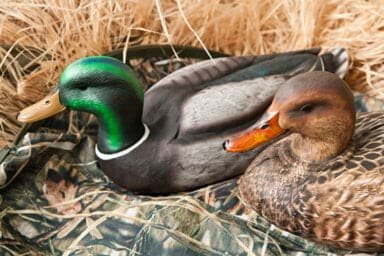
Conclusion
Decoy selection and setup are essential for successful hunting trips and wildlife photography ventures. You can strategically attract the target species you desire by understanding the different types of decoys available – from full-body replicas to silhouette cutouts. Moreover, mastering proper placement techniques along with motion decoys can elevate the realism factor of your setup substantially.
Take advantage of the concealment options offered by natural cover and camouflage patterns to blend seamlessly with the surroundings. Don’t forget about the importance of maintenance and storage.
By keeping your decoys in top shape and providing them with proper protection during off-seasons, you can ensure their reliability for years. So embrace the art of decoy selection and setup, and immerse yourself in the thrilling world of outdoor pursuits!

